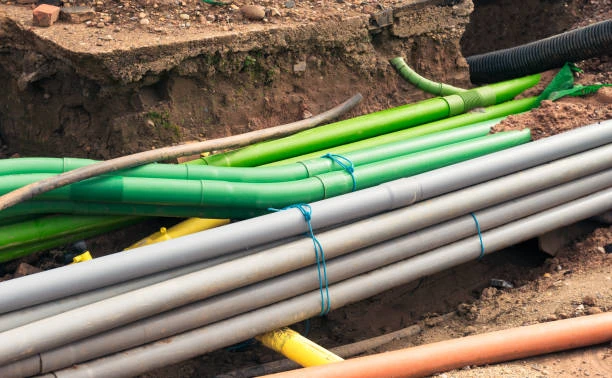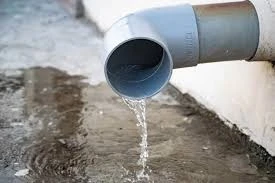Introduction
In recent years, plastic plumbing has gained prominence in both residential and commercial applications due to its durability, cost-effectiveness, and ease of installation. Recognizing the growing importance of this material in the plumbing industry, the Plastic Pipe Institute (PPI) has announced a series of instructional videos aimed at educating professionals and enthusiasts alike. This initiative promises to enhance understanding of plastic plumbing systems, ensuring better installation and maintenance practices. In this article, we’ll explore the significance of plastic plumbing, the content of these instructional videos, and their potential impact on the industry.
The Rise of Plastic Plumbing
Why Choose Plastic Plumbing?
Plastic pipe materials, such as PVC (polyvinyl chloride), CPVC (chlorinated polyvinyl chloride), and PEX (cross-linked polyethylene), offer several advantages over traditional metal options:
- Corrosion Resistance: Unlike metal pipes, plastic pipe systems are immune to rust and corrosion, ensuring a longer lifespan.
- Lightweight: Plastic pipes are significantly lighter than their metal counterparts, making them easier to handle and transport.
- Cost-Effective: The lower cost of materials and installation translates to savings for both contractors and homeowners.
- Flexibility and Versatility: Plastic pipe can be easily cut and joined, allowing for a wide range of applications and configurations.

Common Applications
Plastic plumbing is widely used in various settings, including:
- Residential Homes: For water supply lines, drainage systems, and even radiant heating systems.
- Commercial Buildings: Utilized in restrooms, kitchens, and HVAC systems where lightweight and corrosion-resistant materials are beneficial.
- Industrial Facilities: Employed in chemical processing and water treatment plants due to its chemical resistance.
Instructional Videos: An Overview
Content of the Videos
The Plastic Pipe Institute’s new series of instructional videos covers a broad range of topics relevant to plastic plumbing. Key areas of focus include:
- Material Selection: Understanding the differences between various types of plastic pipes and their applications.
- Installation Techniques: Step-by-step guidance on properly installing PVC, CPVC, and PEX plumbing systems, including joint fittings and connections.
- Maintenance Tips: Best practices for maintaining plastic pipe systems to extend their lifespan and prevent leaks.
- Troubleshooting Common Issues: Identifying and resolving typical problems encountered with plastic pipe systems, such as leaks and blockages.
Target Audience
The videos are designed for a diverse audience, including:
- Plumbers and Contractors: Professionals seeking to enhance their skills and knowledge of plastic plumbing systems.
- DIY Enthusiasts: Homeowners interested in undertaking their own plumbing projects.
- Educators and Trainers: Instructors looking for high-quality resources to teach plumbing students.
Benefits of the Instructional Videos
Enhanced Learning Experience
The use of visual media in these instructional videos provides a more engaging learning experience compared to traditional manuals or textbooks. Viewers can see techniques demonstrated in real-time, making it easier to grasp complex concepts.
Accessibility
The videos are available online, making them accessible to anyone with an internet connection. This democratizes access to quality education in the plumbing industry, ensuring that a wider audience can benefit from the information.
Industry Standardization
By providing a consistent source of information, the PPI helps standardize practices across the industry. This can lead to improved safety, efficiency, and quality in plastic plumbing installations.
The Impact on the Plumbing Industry
Training and Certification
As the plumbing industry evolves, so does the need for continuous education. The PPI’s instructional videos can serve as valuable resources for training programs and certification courses, ensuring that professionals remain up-to-date with the latest techniques and best practices.
Addressing Skill Gaps
With many experienced plumbers retiring, there is a growing skill gap in the industry. By providing accessible training materials, the PPI aims to equip the next generation of plumbers with the knowledge they need to succeed.
Promoting Best Practices
The instructional videos emphasize the importance of best practices in plastic plumbing, helping to reduce mistakes that can lead to costly repairs or safety hazards. This focus on quality workmanship ultimately benefits consumers and the industry as a whole.
Conclusion
The Plastic tube Institute’s announcement of instructional videos marks a significant step forward in the education and training of professionals in the plumbing industry. By focusing on the benefits and best practices of plastic plumbing, these resources promise to enhance the knowledge and skills of plumbers, contractors, and DIY enthusiasts alike. As plastic plumbing continues to dominate the market, initiatives like these will be crucial for ensuring quality and safety in installations, benefiting both the industry and consumers.
FAQs
1. What types of plastic plumbing materials are commonly used?
The most common types include PVC, CPVC, and PEX, each with specific applications and advantages.
2. How do I choose the right plastic tube material for my project?
Consider factors such as the application, temperature requirements, and local building codes when selecting materials.
3. Are the instructional videos free to access?
Yes, the Plastic Plumbing Institute offers the instructional videos online for free to promote education in the industry.
4. Can these videos help with DIY plumbing projects?
Absolutely! The videos are designed to assist both professionals and DIY enthusiasts in understanding and executing plastic plumbing installations.
5. How often should plastic pipe systems be inspected?
Regular inspections are recommended at least once a year to identify potential issues before they become significant problems.

















